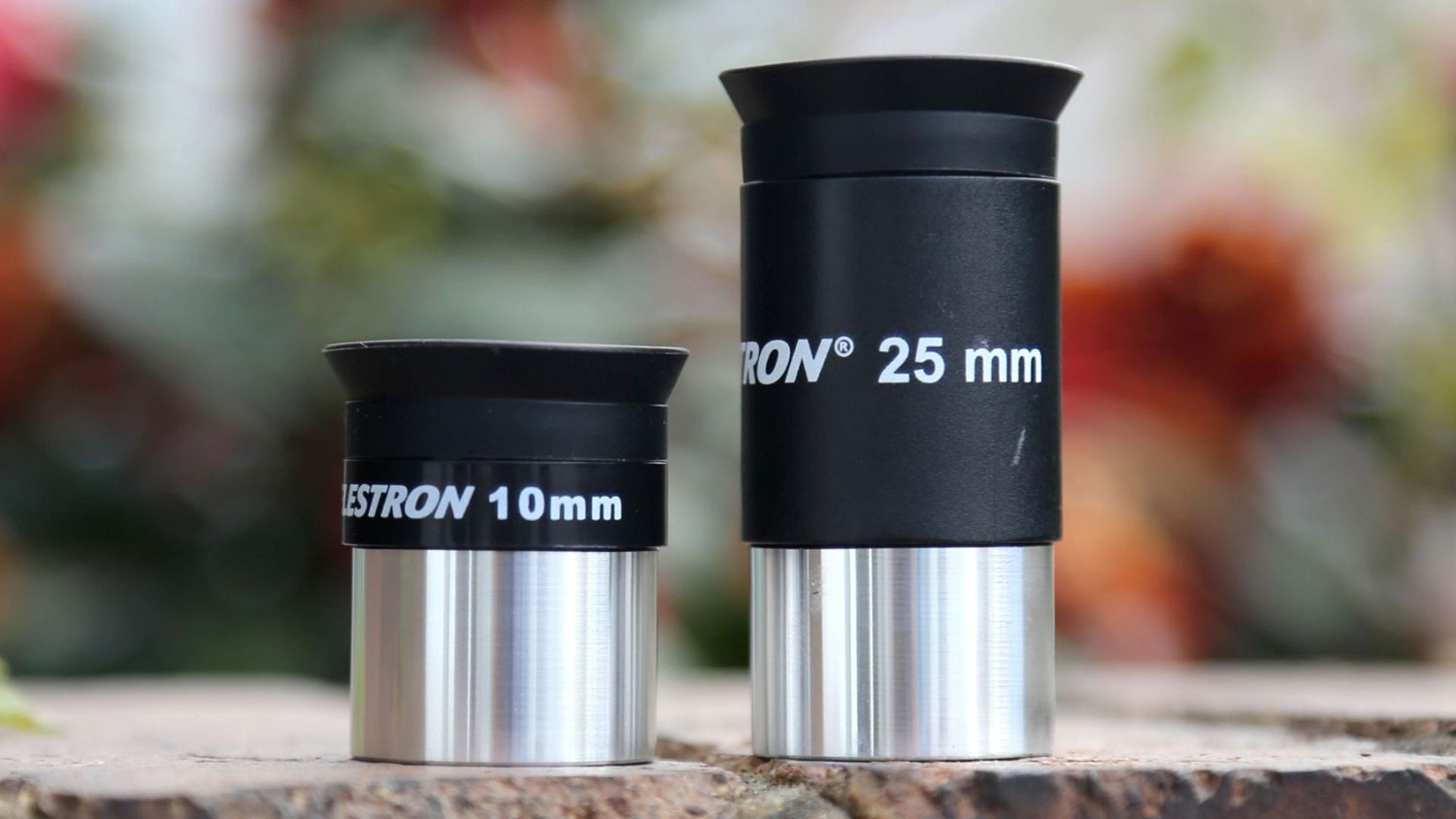Celestron StarSense Explorer DX 130AZ telescope review
The Celestron StarSense Explorer DX 130AZ Newtonian reflector telescope uses a planetarium app to find heavenly bodies, but targeting it is a surprisingly manual affair. Here's our review


The Celestron StarSense Explore DX 130AZ is aimed at beginners yet needs to be moved completely manually. Luckily there’s an app and a smartphone mount on hand to show you exactly where to point it. It helps the user learn to navigate the night sky and gives super-sharp views of the treasures within it.
-
+
Simple set-up
-
+
Easy to align
-
+
Sharp images
-
+
All-in-one package
-
-
No astrophotography possible
-
-
Manual slewing
-
-
Eyepieces are limited
-
-
Requires collimation
Why you can trust T3

The Celestron StarSense Explorer DX 130AZ reviewed here belongs to a select band of all-new telescopes that use the technology found in smartphone apps to help you explore the night sky. You’ve probably already got an augmented reality ‘planetarium’ app on your phone that shows you stars and planets. This telescope uses its own version of one of those apps and asks you to place your smartphone in a special bracket on the side of the optical tube.
Using your smartphone’s GPS, its camera and a small mirror it calculates exactly where it – and everything else – is. Then it tells you where to manually point your telescope using crosshairs on your phone’s bright screen.
If you’re after one of the best telescope for stargazing or the best telescope for beginners and you know all about how to choose your first telescope, could this be the one to go for? Let's take a closer look. Here's my full Celestron StarSense Explorer DX 130AZ telescope review.
- Types of telescope: Refractor, reflector, Newtonian or Dobsonian?
- How to set up a telescope for observing the night sky
- Binoculars vs telescopes: which is better for stargazing?
Celestron StarSense Explorer DX 130AZ review: price and release date
Originally launched in 2020, Celstron’s StarSense Explorer comes in four sizes across two different optical designs, though all of them have a manual altazimuth mount. What we have here is the StarSense Explorer DX 130AZ, the largest on offer, which is a Newtonian reflector telescope with an aperture of 5.1-inches. At ticket price, it sells for UK£563 / US$600 / AUS$1,150.
The StarSense Explorer range also includes the slightly smaller StarSense Explorer DX 102AZ (a refractor telescope with a 4-inch aperture), the StarSense Explorer LT114AZ (a Newtonian reflector telescope with a 4.5-inch aperture) and the StarSense Explorer LT 80AZ (a refractor telescope with a 3.1-inch aperture).
Celestron StarSense Explorer DX 130AZ review: features and what’s new

The StarSense Explorer DX 130AZ is a Newtonian reflector telescope with a 5.1-inch aperture. In terms of magnification that’s a significant step-up from the ‘toy’ telescopes that dominate the beginner’s market. However, this is a telescope definitely aimed at beginners; that much is obvious from the basic 25mm and 10mm eyepieces supplied with it.

Everything you need to go view the night sky is included in the box. There’s a sturdy tripod with extending legs, the telescope tube, two eyepieces and a small fabric drawstring bag for storing them in.
Get all the latest news, reviews, deals and buying guides on gorgeous tech, home and active products from the T3 experts
However, almost all users will be using the StarSense app, which is a free app for your smartphone. It’s really easy to use; you just put your smartphone in the mount, tell the app which telescope you have and take the cover off the mirror just below it.
Celestron StarSense Explorer DX 130AZ: specs
Optical design: Newtonian Reflector
Objective lens diameter (aperture): 5.11"/130mm
Focal length: 25.59"/650mm
Focal ratio: f5
Software supplied: StarSense Explorer app
Mount: manual alt-az
Weight: 18 lbs / 8.16 kg
Level: beginner
Celestron StarSense Explorer DX 130AZ review: set-up and use

Celestron claims that it takes about 15 minutes to set-up the StarSense Explorer DX 130AZ from scratch and we found that to be largely true. It’s a cinch to position the tripod and screw the various components to it. The only issue we had was that we initially placed it all on some decking, which wobbled about a bit as we walked around the ‘scope, upsetting the alignment process. Placed on hard-standing it worked swiftly, allowing us to select objects from a ‘tonight’ list.
We then followed some simple arrows on the phone app to move the StarSense Explorer DX 130AZ into position using its manual alt-azimuth mount. Once you get close the app suddenly zooms in and it’s then necessary to use a couple of wobbly motor control sticks poking out of the mount to gradually adjust the axis to get the telescope bang-on your target. Confirming it all visually through the 25mm eyepiece is a little confusing at first if you’re a beginner because Newtonian reflector telescopes always show objects upside down.

The way the app works with the telescope takes a little getting to know, but it’s a process that comes naturally after a few attempts. Although it worked for us for the first few moonless nights in a city, it became less effective as the Moon waxed past its First Quarter phase and towards its full phase. Telescopes always work better(and give better views) in dark skies and the StarSense Explorer DX 130AZ is no different.
Celestron StarSense Explorer DX 130AZ review: performance

For all its whizzy apps and aligning tricks this is a relatively low power telescope using the supplied eyepieces. As such it’s best used for views of open clusters, globular clusters and galaxies and nebulae rather than planets (though you could upgrade them, or add a Barlow lens to double the power). The first thing we noticed about the StarSense Explorer DX 130AZ was how sharp it is when well focused. The flashes of colour from twinkling Sirius immediately impressed as did the sharpness of Mizar and Alcor in the Plough. There was plenty of detail in the nearby Cigar Galaxy and Bode’s Galaxy while views of the Orion Nebula in the southwest gave us a real ‘wow!’ moment.
The drawback of being a manual telescope is that it doesn’t stay trained on an object. Instead, you have to keep nudging those knobs to keep your target centred. That goes triple for the Moon, which quickly moves out of view. However, put the StarSense Explorer DX 130AZ on the shadowed craters on the lunar surface in the 25mm eyepiece and the results are outstandingly sharp. Not so the 10mm eyepiece, which is rather blurry.
One drawback is that the Netwonian reflectors’ optics do occasionally require collimating, which is going to be off-putting for beginners. However, there’s a YouTube video for that.
Celestron StarSense Explorer DX 130AZ review: alternatives to consider
A close cousin of the StarSense Explorer DX 130AZ is the more affordable SkyWatcher Explorer 130M, another Newtonian reflector telescope aimed at beginners that trades smartphone aligning for a motorised equatorial mount. Instead of an app this ‘go to’ telescope has a handset from which you choose which targets you want to ‘scope to automatically slew to.
If money isn’t a problem and you want to indulge in super-simple deep-sky astrophotography then check out the Unistellar eVscope 2, a very expensive ‘smart’ telescope that can be entirely controlled using a smartphone. It’s fitted with a Sony camera sensor so it constantly takes images of the night sky and sends its results to your phone.
Celestron StarSense Explorer DX 130AZ review: verdict

If we’re all carrying around a planetarium in our pockets then what’s the point of replicating that in a telescope? That’s the thinking behind the StarSense Explorer DX 130AZ, which is relatively easy to use and gives impressively sharp views of the night sky.
Most beginners wouldn’t choose a completely manual telescope as their first, but with an excellent app to help the StarSense Explorer DX 130AZ not only gives sharp views but also helps you actually learn how to navigate the night sky. Isn’t that what most of us wanted in the first place?
Jamie is a freelance journalist, copywriter and author with 20 years' experience. He's written journalism for over 50 publications and websites and, when he's not writing, spending most of his time travelling – putting the latest travel tech through its paces.
